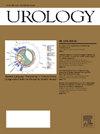The Diagnostic Efficacy of Rapid Urine Sediment Fluorescence Staining in Urinary Tract Infections: An Exploratory Study
IF 2.1
3区 医学
Q2 UROLOGY & NEPHROLOGY
引用次数: 0
Abstract
Objective
To investigate rapid and early diagnostic approaches for urinary tract infections (UTIs).
Methods
Coincidence rates, sensitivities, and specificities of fungal fluorescence staining for fungal detection were calculated. Additionally, the positive rate of cellular fluorescence staining was compared with bacterial urine culture, with a focus on the increasing correlation between fluorescently stained bacteria proportions and the concordance between methods. Furthermore, diagnostic performance for detecting cocci and bacilli via histocyte fluorescence staining was evaluated. Receiver Operating Characteristic (ROC) curve analyses were conducted to determine the diagnostic accuracy of urine sediment fluorescence staining for fungal and bacterial UTIs.
Results
Fungal fluorescence staining of urine sediment demonstrated a coincidence rate of 95.90%, sensitivity of 94.44%, and specificity of 96.05%. The positivity of cellular fluorescence staining exceeded that of bacterial culture (P = .014), and an enhanced agreement between the 2 methods was observed with a rise in the proportion of stained bacteria. For histocyte fluorescence staining in identifying cocci and bacilli, coincidence rates were 76.92% and 74.36%, sensitivities were 51.85% and 73.85%, and specificities reached 82.43% and 88.18%, respectively. The ROC curve areas for diagnosing fungal and bacterial UTIs using urine sediment fluorescence staining were 0.952 and 0.87, respectively.
Conclusion
Urine sediment fluorescence staining offers promise as a rapid diagnostic tool for UTIs, demonstrating high sensitivity and specificity for fungal detection and a competitive performance in bacterial identification when compared to standard culture methods. These findings highlight the potential utility of this technique in clinical settings for prompt and accurate UTI diagnosis.
尿沉渣快速荧光染色诊断尿路感染的初步研究。
目的:探讨尿路感染的早期快速诊断方法。方法:计算真菌荧光染色检测真菌的符合率、灵敏度和特异性。此外,将细胞荧光染色的阳性率与细菌尿培养进行比较,重点关注荧光染色的细菌比例与方法之间的一致性之间的相关性增加。此外,对组织细胞荧光染色检测球菌和杆菌的诊断性能进行了评价。采用受试者工作特征(ROC)曲线分析,确定尿沉积物荧光染色对真菌和细菌uti的诊断准确性。结果:尿沉渣真菌荧光染色符合率为95.90%,灵敏度为94.44%,特异性为96.05%。细胞荧光染色的阳性率高于细菌培养(P=0.014),随着染色细菌比例的增加,两种方法的一致性增强。组织细胞荧光染色鉴定球菌和杆菌的符合率分别为76.92%和74.36%,敏感性分别为51.85%和73.85%,特异性分别为82.43%和88.18%。尿沉积物荧光染色诊断真菌和细菌uti的ROC曲线面积分别为0.952和0.87。结论:与标准培养方法相比,尿液沉积物荧光染色在真菌检测方面具有较高的敏感性和特异性,在细菌鉴定方面具有竞争力,有望成为尿路感染的快速诊断工具。这些发现强调了该技术在临床环境中对尿路感染的快速和准确诊断的潜在效用。
本文章由计算机程序翻译,如有差异,请以英文原文为准。
求助全文
约1分钟内获得全文
求助全文
来源期刊

Urology
医学-泌尿学与肾脏学
CiteScore
3.30
自引率
9.50%
发文量
716
审稿时长
59 days
期刊介绍:
Urology is a monthly, peer–reviewed journal primarily for urologists, residents, interns, nephrologists, and other specialists interested in urology
The mission of Urology®, the "Gold Journal," is to provide practical, timely, and relevant clinical and basic science information to physicians and researchers practicing the art of urology worldwide. Urology® publishes original articles relating to adult and pediatric clinical urology as well as to clinical and basic science research. Topics in Urology® include pediatrics, surgical oncology, radiology, pathology, erectile dysfunction, infertility, incontinence, transplantation, endourology, andrology, female urology, reconstructive surgery, and medical oncology, as well as relevant basic science issues. Special features include rapid communication of important timely issues, surgeon''s workshops, interesting case reports, surgical techniques, clinical and basic science review articles, guest editorials, letters to the editor, book reviews, and historical articles in urology.
 求助内容:
求助内容: 应助结果提醒方式:
应助结果提醒方式:


